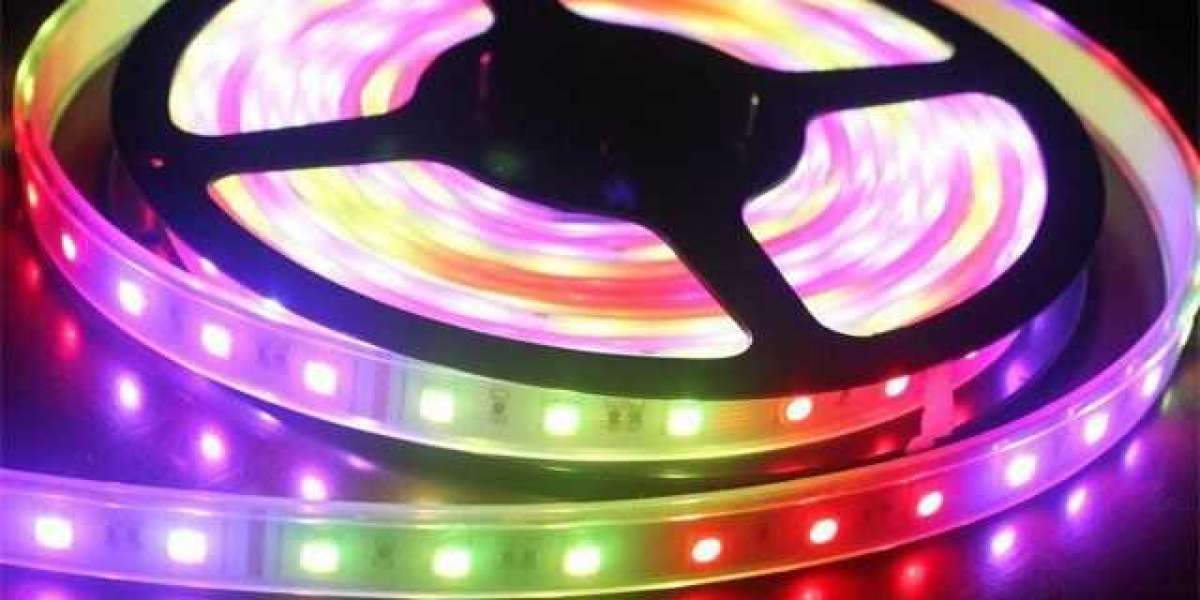In today’s world of energy-efficient lighting, LED technology stands out as the top choice for both residential and commercial applications. But behind every bright LED fixture is a critical component that often goes unnoticed: the LED module distributor. This device, sometimes called an LED driver, is responsible for delivering the right amount of power to your LED lights, ensuring they operate safely and efficiently.
This article will guide you through the essentials of LED power supplies, explain how to select the right one, and discuss common challenges and solutions to get the most out of your LED lighting system.
What Is an LED Power Supply?
An LED power supply converts standard electrical power into a form that LEDs can safely use. Most household and commercial electrical systems provide alternating current (AC) at high voltages (e.g., 120V or 230V AC). However, LEDs require direct current (DC) at low voltage and stable current to function properly.
Without a power supply, LEDs would be exposed to damaging voltage spikes, flickering, or inconsistent brightness. The power supply’s job is to convert the input voltage to a steady output that matches the LED’s electrical requirements.
Why Do LEDs Need Specialized Power Supplies?
Unlike traditional incandescent bulbs, LEDs are semiconductor devices that are sensitive to electrical conditions. Providing them with the right power:
Protects LEDs from damage: Prevents overcurrent and voltage fluctuations.
Ensures consistent brightness: Maintains steady light output without flickering.
Improves energy efficiency: Converts power efficiently, reducing waste.
Extends lifespan: Prevents premature failure of LEDs.
Using a standard power source without proper regulation can cause flickering, reduced efficiency, or even failure of the LED fixture.
Types of LED Power Supplies
When shopping for LED power supplies, you will mainly encounter two types:
1. Constant Voltage (CV) Power Supplies
Supply a fixed voltage, such as 12V or 24V DC.
Suitable for LED strips, modules, and other low-voltage LED products.
Ideal when LEDs are connected in parallel.
2. Constant Current (CC) Power Supplies
Deliver a fixed current, often between 350mA to 1500mA.
Voltage can vary depending on LED load.
Best for high-power LEDs, where maintaining current is critical.
Choosing the correct type depends on your LED setup. For instance, most LED strips use constant voltage drivers, while individual high-power LEDs or arrays use constant current drivers.
Important Specifications to Consider
Selecting the right LED power supply involves matching the electrical and physical characteristics of the supply with your LED system:
1. Power Rating (Wattage)
Calculate the total wattage of all LEDs connected to the power supply and choose a driver with at least 20% more capacity. This margin prevents overload and extends the lifespan of the power supply.
2. Voltage and Current Ratings
Match the output voltage and current of the driver to the LED’s specifications. An improper match can lead to flickering, reduced brightness, or damage.
3. Dimming Support
If you plan to dim your LEDs, ensure your power supply supports the desired dimming method, such as:
PWM (Pulse Width Modulation)
0-10V Dimming
TRIAC Dimming
4. Environmental Protection
Consider the location of installation:
For indoor, dry environments, standard power supplies suffice.
For outdoor or damp locations, choose power supplies with waterproof ratings like IP65 or higher.
5. Safety Certifications
Choose power supplies certified by recognized standards such as UL, CE, or FCC to ensure quality and safety compliance.
Benefits of Using Quality LED Power Supplies
Stable lighting output without flicker.
Longer LED lifespan due to regulated power.
Energy savings with higher efficiency models.
Reduced maintenance costs by preventing early failures.
Enhanced safety through built-in protections like short circuit and overload safeguards.
Common Applications for LED Power Supplies
Residential Lighting: Kitchen under-cabinet lighting, garden lights, ceiling fixtures.
Commercial and Retail Lighting: Storefront displays, office lighting, accent lighting.
Industrial Lighting: Warehouse, factory floor lighting requiring robust power solutions.
Outdoor Lighting: Street lamps, parking lot lights, landscape lighting.
Specialty Lighting: Signage, architectural lighting, automotive LED systems.
Installation and Usage Tips
Always check manufacturer specs for both the LED and power supply.
Use proper wire gauge to handle the current safely.
Avoid overloading the power supply beyond its rated wattage.
Ensure good ventilation to avoid overheating of the power supply.
Use waterproof enclosures if installed in outdoor or humid environments.
Test the system before permanent installation to ensure compatibility and performance.
Troubleshooting Common Issues
LED Flickering: Often caused by incompatible or faulty power supplies. Check for proper voltage and current ratings.
LEDs Not Lighting Up: Confirm wiring, polarity, and power supply output.
Overheating Power Supply: Ensure proper ventilation and avoid exceeding the power rating.
Dimming Problems: Verify the dimmer and driver compatibility.
Future Trends in LED Power Supplies
Technology continues to evolve, and new trends are emerging in LED power supplies:
Smart LED Drivers: Compatible with home automation systems, allowing remote control and scheduling.
Energy Monitoring: Drivers that provide real-time feedback on energy usage.
Compact and Modular Designs: Smaller units for tighter installation spaces.
Integration with Renewable Energy: Power supplies designed to work with solar panels or batteries for off-grid lighting solutions.
Conclusion
The LED power supply is a critical yet often underestimated part of any LED lighting system. Choosing the right power supply ensures your LEDs operate efficiently, safely, and with optimal brightness. Whether you are a homeowner upgrading your lighting or a professional designing large-scale installations, understanding the types, specifications, and applications of LED drivers will help you make informed decisions.
With the right power supply, your LED lights will deliver the benefits of energy savings, reliability, and long-lasting performance that LED technology promises.











